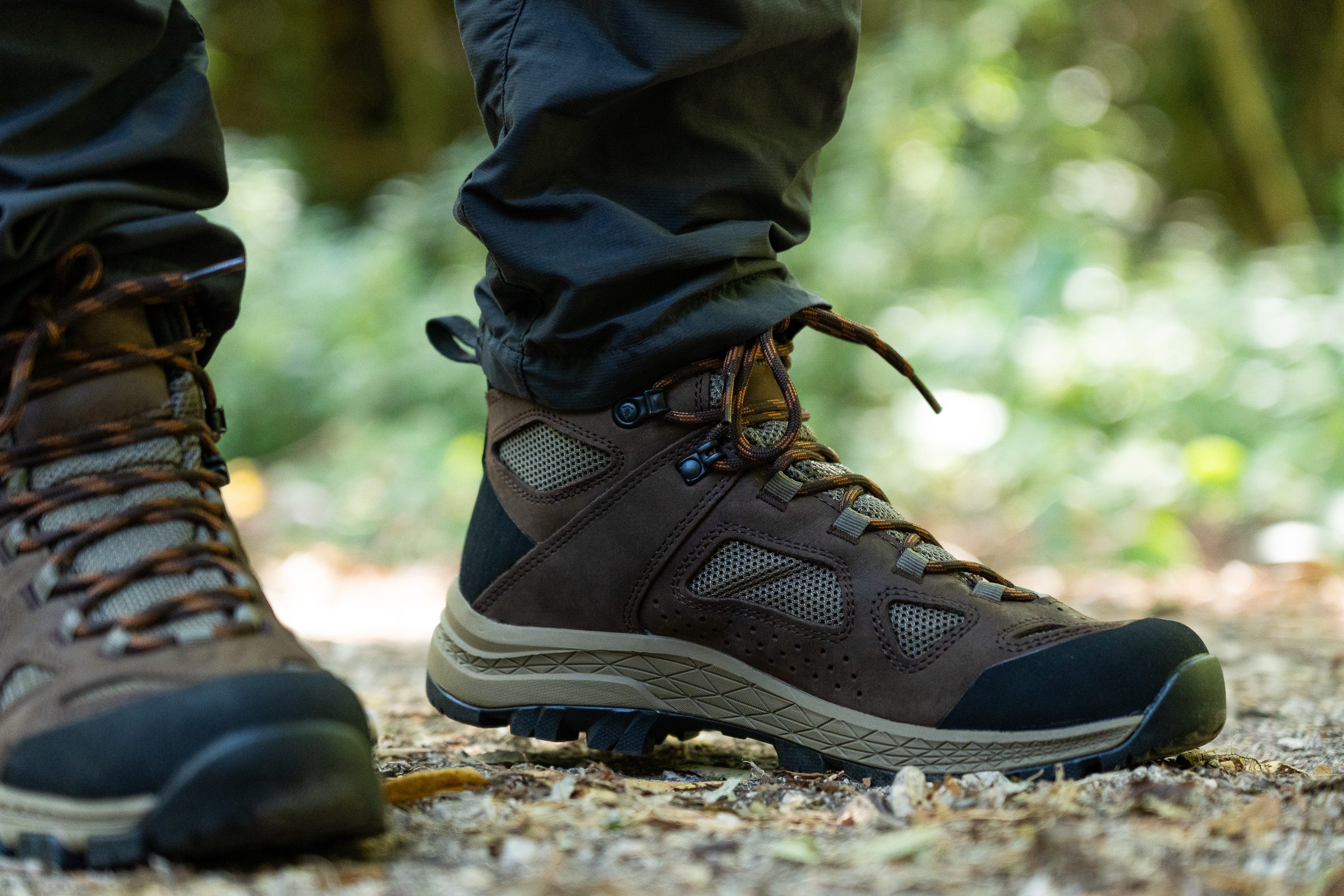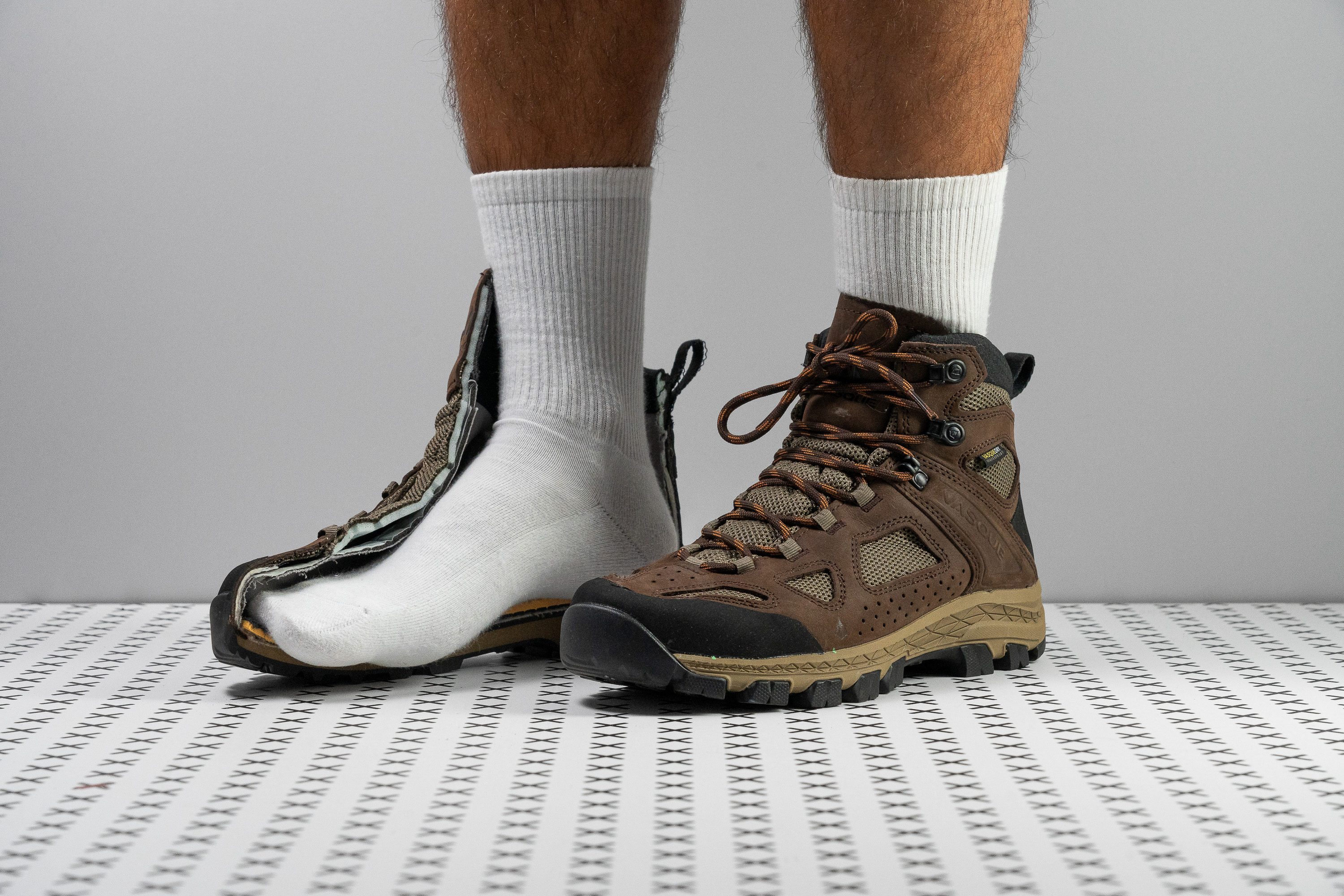Nuestra conclusión
Pros
- Muy buena estabilidad y sujeción del pie
- Mucha protección bajo los pies
- Impermeabilización eficaz (aprobadas para arroyos y charcos profundos)
- Suela exterior de caucho muy resistente
- Buen agarre en varias superficies
- Buena relación calidad-precio
- Con materiales sostenibles en varias zonas
Contras
- Los materiales del upper podrían ser más duraderos
- Cordones cortos que se desatan
Veredicto de los usuarios
- Top 1% entre botas de senderismo Vasque
Comparativa
Las botas de senderismo más parecidas
+ + Añadir unas zapatillas | |||||
|---|---|---|---|---|---|
| Puntuación global | 84 Buenas | 77 Aceptables | 88 Notables | 85 Notables | |
| Precio | 205 € | 210 € | 225 € | 220 € | |
| Terreno de trail | Moderado | ModeradoTécnico | ModeradoTécnico | Técnico | |
| Absorción de impactos | Baja | - | Moderada | Baja | |
| Retorno de energía | Moderado | - | Bajo | Moderado | |
| Peso laboratorio Peso marca | 19.9 oz / 563g | 20.6 oz / 583g 20.6 oz / 585g | 14.6 oz / 415g 16.6 oz / 470g | 23.4 oz / 663g 23.1 oz / 655g | |
| Lightweight | ✗ | ✗ | ✓ | ✗ | |
| Transpirabilidad | Baja | Baja | Baja | Baja | |
| Uso | TrekkingSenderismo de un díaNievePara principiantes | TrekkingSenderismo de un díaNieve | TrekkingSenderismo de un díaNieve | TrekkingSenderismo de un díaNieve | |
| Orthotic friendly | ✓ | ✓ | ✓ | ✓ | |
| Drop laboratorio | 16.4 mm | 14.0 mm | 14.1 mm | 18.0 mm | |
| Talla | Tallan un poquito pequeño | Tallan un poquito pequeño | Media talla más pequeñas | Tallan bien | |
| Rigidez de la mediasuela | Firme | Equilibrada | Equilibrada | Equilibrada | |
| Diferencia de la rigidez de la mediasuela en frío | Pequeña | Pequeña | Estándar | Estándar | |
| Rigidez del contrafuerte del talón | Firme | Moderada | Moderada | Firme | |
| Flexibilidad | Flexible | Moderada | Moderada | Rígida | |
| Dureza de la suela | Estándar | Dura | Muy dura | Estándar | |
| Impermeabilización | Impermeables | Impermeables | Impermeables | Impermeables | |
| Material | Piel o cueroMalla | Ante | Textil | Textil | |
| Estación | Invierno | Invierno | Invierno | Invierno | |
| Durabilidad de la parte delantera | Mala | Buena | Buena | Buena | |
| Durabilidad del acolchado del talón | Baja | Media | Media | Alta | |
| Durabilidad de la suela exterior | Decente | Buena | Buena | Decente | |
| Anchura / ajuste | Media | Media | Media | Ancha | |
| Anchura de la parte delantera | Media | Estrecha | Media | Media | |
| Profundidad del dibujo de la suela | 4.6 mm | 4.0 mm | 4.3 mm | 4.7 mm | |
| Altura de la suela en la zona del talón laboratorio | 38.7 mm | 34.2 mm | 34.4 mm | 38.0 mm | |
| Antepié | 22.3 mm | 20.2 mm | 20.3 mm | 20.0 mm | |
| Anchuras disponibles | Estándar | Estándar | EstándarAncho | Estándar | |
| Tecnología | - | Gore-TexVibram | Gore-TexOrtholite | Gore-TexOrtholite | |
| Cut | Corte medio | Corte medio | Corte medio | Corte alto | |
| Removable insole | ✓ | ✓ | ✓ | ✓ | |
| Clasificación | #26 36% inferior | #39 4% inferior | #15 Top 37% | #24 41% inferior | |
| Popularidad | #37 9% inferior | #41 1% inferior | #2 Top 5% | #7 Top 18% |
Quién debería comprárselas
Te recomendamos las Vasque Breeze si estás buscando unas botas versátiles que sean cómodas para el senderismo de un día pero que también tengan la sujeción suficiente para hacer trekking varios días con una mochila pesada. Ah, y además tienen un precio muy razonable.

Quién NO debería comprárselas
Vieron la luz por primera vez en 2004, y la verdad es que no han cambiado mucho desde entonces. Aunque estas botas ofrecen un buen rendimiento en los senderos, sentimos que estaban un poco anticuadas en comparación con el mercado actual de su categoría.
Antes de comprarte estas Vasque, te recomendamos que le eches un ojo a otras opciones, como las Salomon X Ultra 4 Mid GTX, que son más ligeras, ágiles, y tienen un ajuste ideal; o a las La Sportiva Ultra Raptor II Mid GTX, que son ligerísimas pero siguen siendo estables y cómodas.
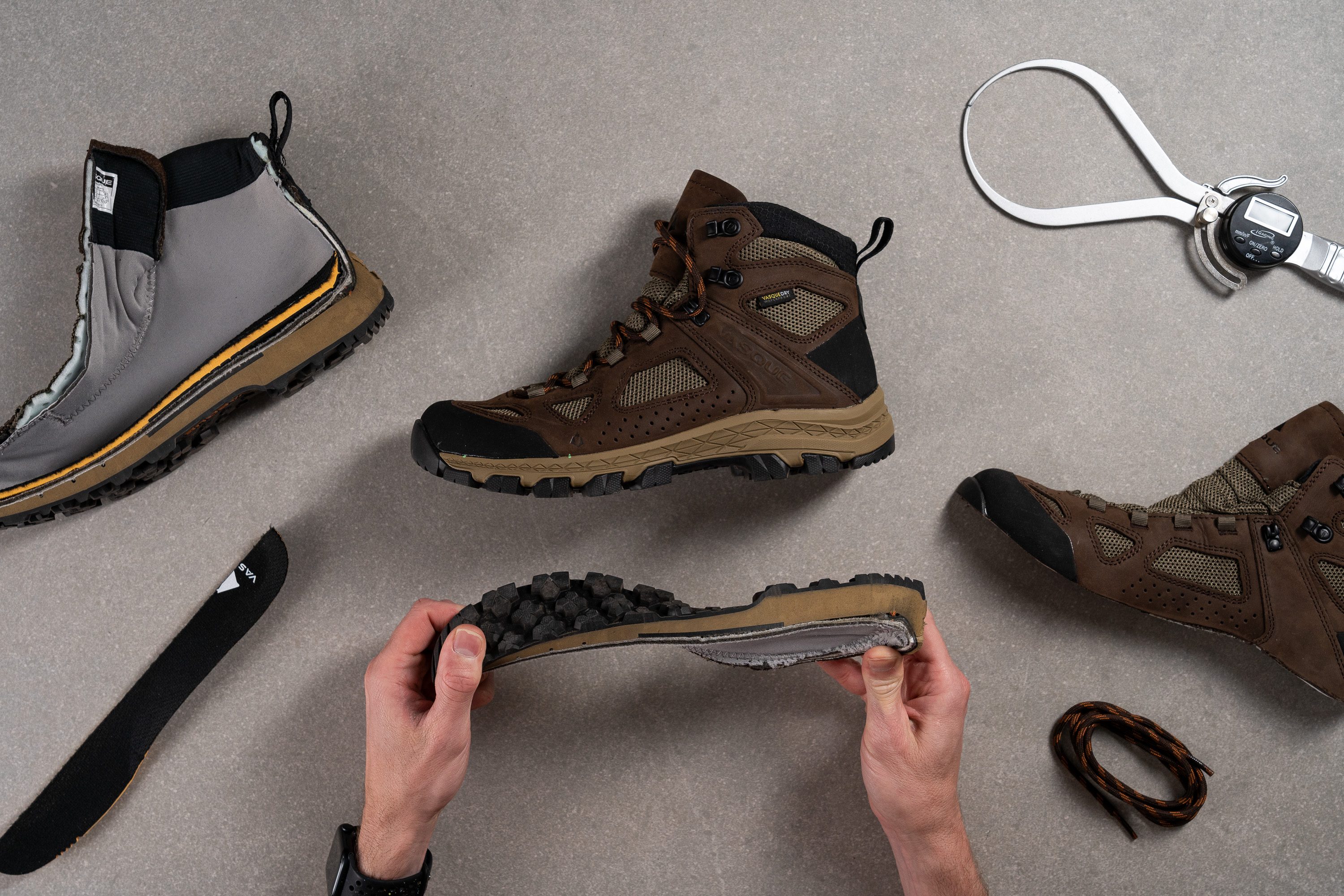
Amortiguación
Shock absorption
Nuestras pruebas de laboratorio confirmaron que la plataforma firme y robusta de las Vasque Breeze no se comprime mucho, así que su absorción de impactos es inferior a la media: 84 SA.
Esto significa que tus pies y tus articulaciones todavía reciben la protección contra impactos necesaria, pero la firmeza y la estabilidad predominan bajo los pies.
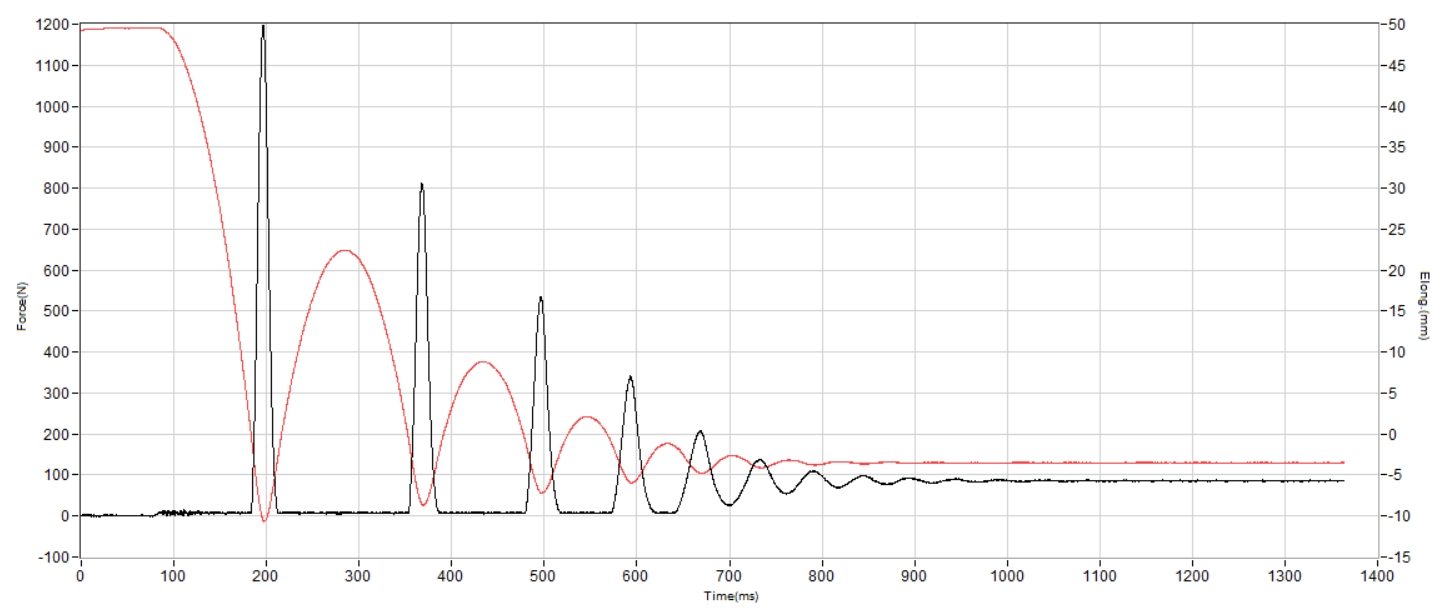
| Breeze | 84 SA |
| Media | 93 SA |
Energy return
Lo bueno es que, gracias a su moderado retorno de energía del 51,8 %, estas botas no se sienten totalmente planas y aburridas. La elasticidad de los componentes de su mediasuela ayuda a mantener el dinamismo y hace que el cuerpo no se canse tanto, sobre todo teniendo en cuenta la baja absorción de impactos.
| Breeze | 51.8% |
| Media | 50.5% |
Altura de la suela en la zona del talón
Con las Vasque Breeze te puedes esperar bastante protección bajo los pies, así como amortiguación en el trail. Descubrimos que tienen una suela lo suficientemente alta incluso para las rutas más largas.

Nuestro calibre marcó 38,7 mm cuando medimos la altura de la suela en el talón, que está justo dentro de la media de las botas de trekking. Si terminas peleándote contra rocas o raíces, tus pies no terminarán malheridos con todo este material protegiéndolos.
| Breeze | 38.7 mm |
| Media | 36.3 mm |
Altura de la suela en el antepié
La suela en el antepié tiene una altura bastante media, de 22,3 mm, lo que es típico para unas botas de senderismo.

Nos protegió la punta del pie, dejándonos sentir el suelo a su vez. Vamos, que sentíamos que teníamos el control de nuestros movimientos en todo momento.
| Breeze | 22.3 mm |
| Media | 23.0 mm |
Drop
Las botas de trekking suelen tener un drop más alto, así que no nos sorprendió ver que el de las Breeze era de 16,4 mm.
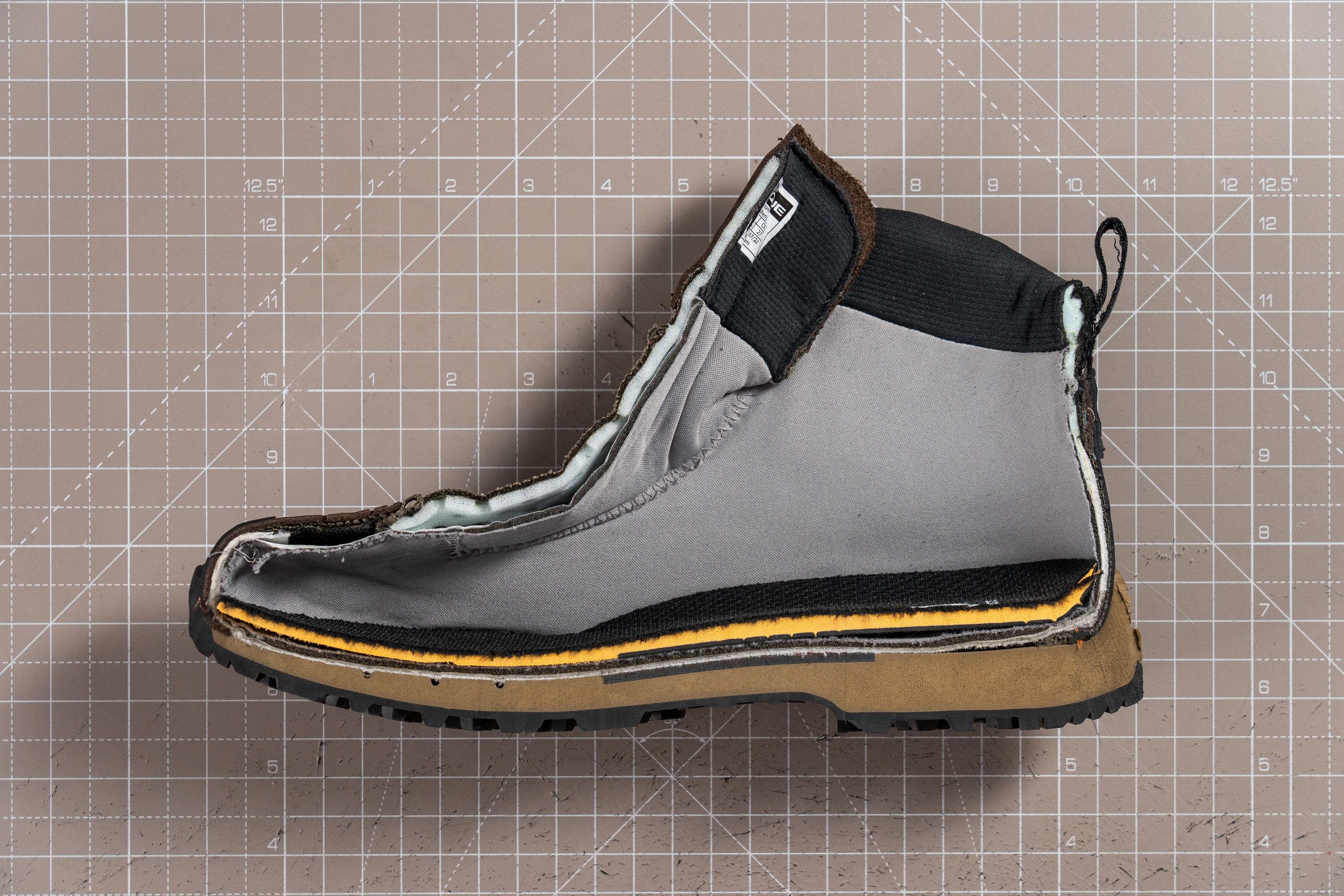
Al llevar una carga más pesada, que el talón esté más alto ayuda a aliviar la presión sobre el tobillo y el tendón de Aquiles, al tiempo que añade amortiguación donde más se necesita: debajo del talón.
| Breeze | 16.4 mm |
| Media | 13.3 mm |
Suavidad de la mediasuela
Como son unas botas de senderismo más tradicionales, la mediasuela firme de las Vasque Breeze es la que se encarga de que sean estables. En este sentido, son totalmente opuestas a las Hoka Kaha 2 GTX.
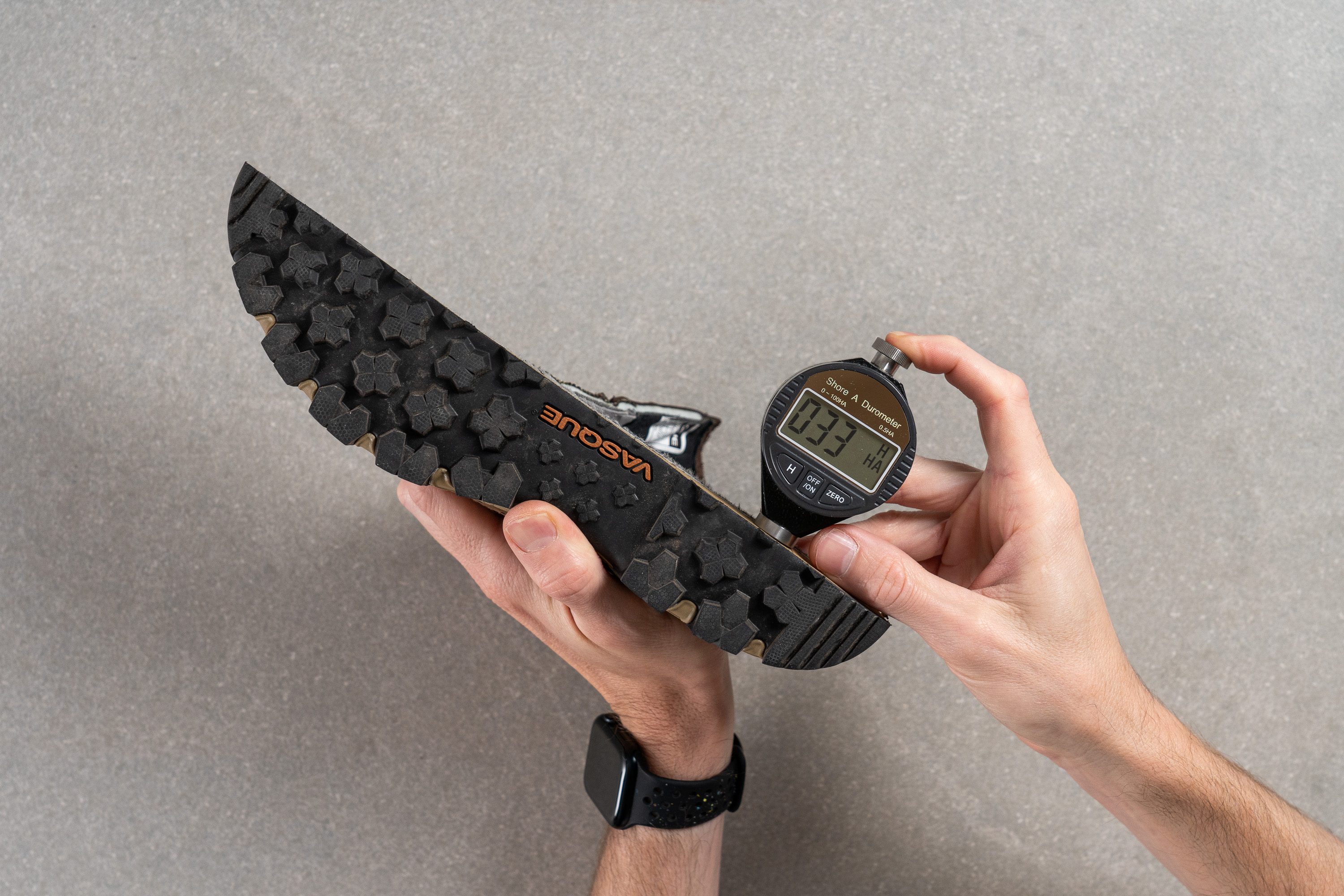
Nuestro durómetro marcó 32,9 HA, así que la espuma de estas botas es un 20 % más firme que la media. La espuma en cuestión es Enduralast Bio EVA, propiedad de la marca (y que está fabricada con un 20 % de caña de azúcar, por cierto).
Aunque son más firmes, las Breeze no son como un ladrillo que te deja los pies hechos polvos después de hacer senderismo. Siguen siendo un poco blandas para amortiguar los golpes al pisar terreno duro.
| Breeze | 32.9 HA |
| Media | 28.4 HA |
Tallaje y ajuste
Talla
Las Vasque Breeze quedan un poco pequeñas (19 votos).
Longitud interna
| Breeze | 272.6 mm |
| Media | 271.4 mm |
Toebox width - widest part
We discovered that the Vasque Breeze offers ample toe space to accommodate thick socks and moderate foot swelling. Our caliper showed 102.3 mm in the widest area of its toebox which is the same as the average of hiking boots.
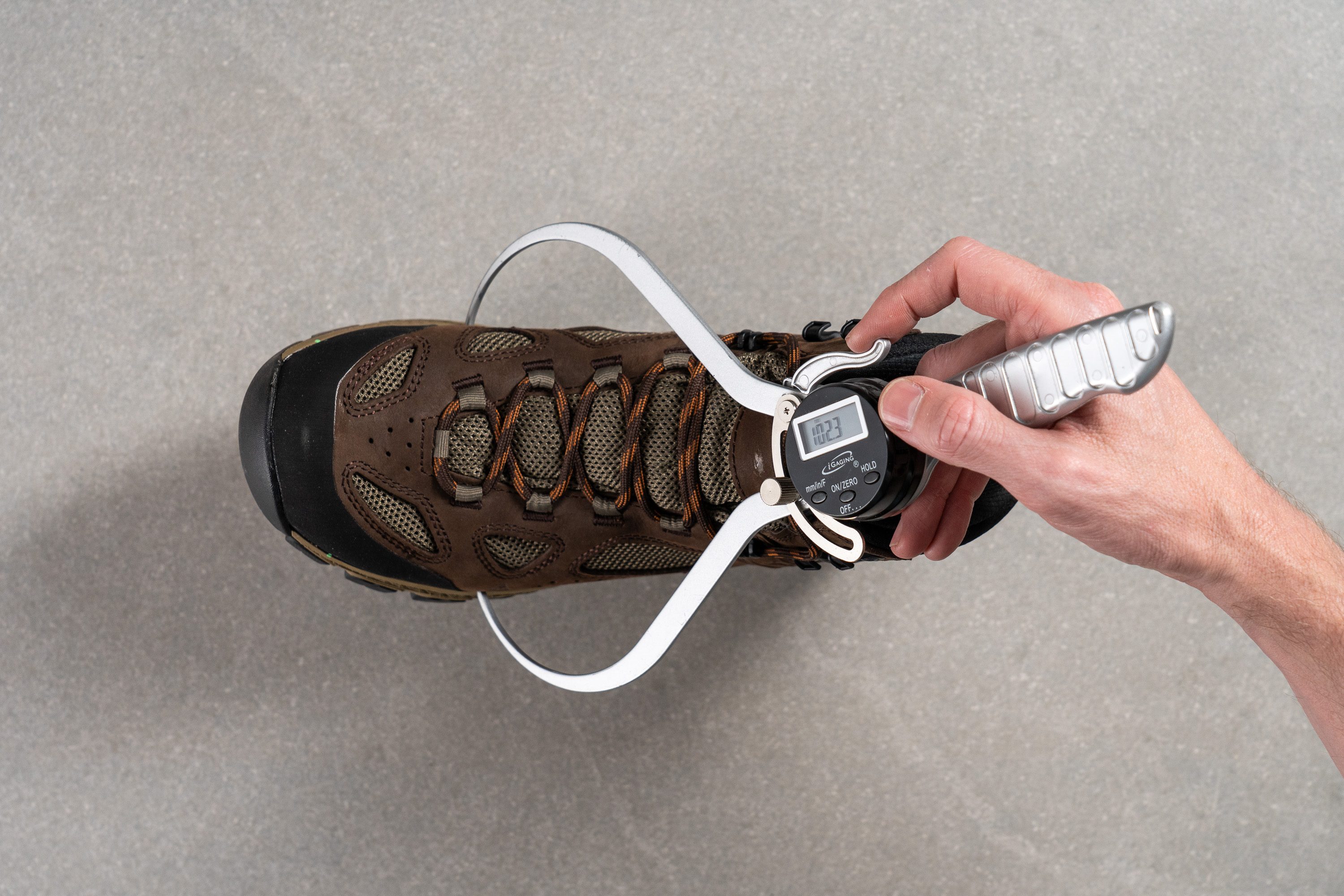
And if you need even more room, the Breeze is also available in wide.
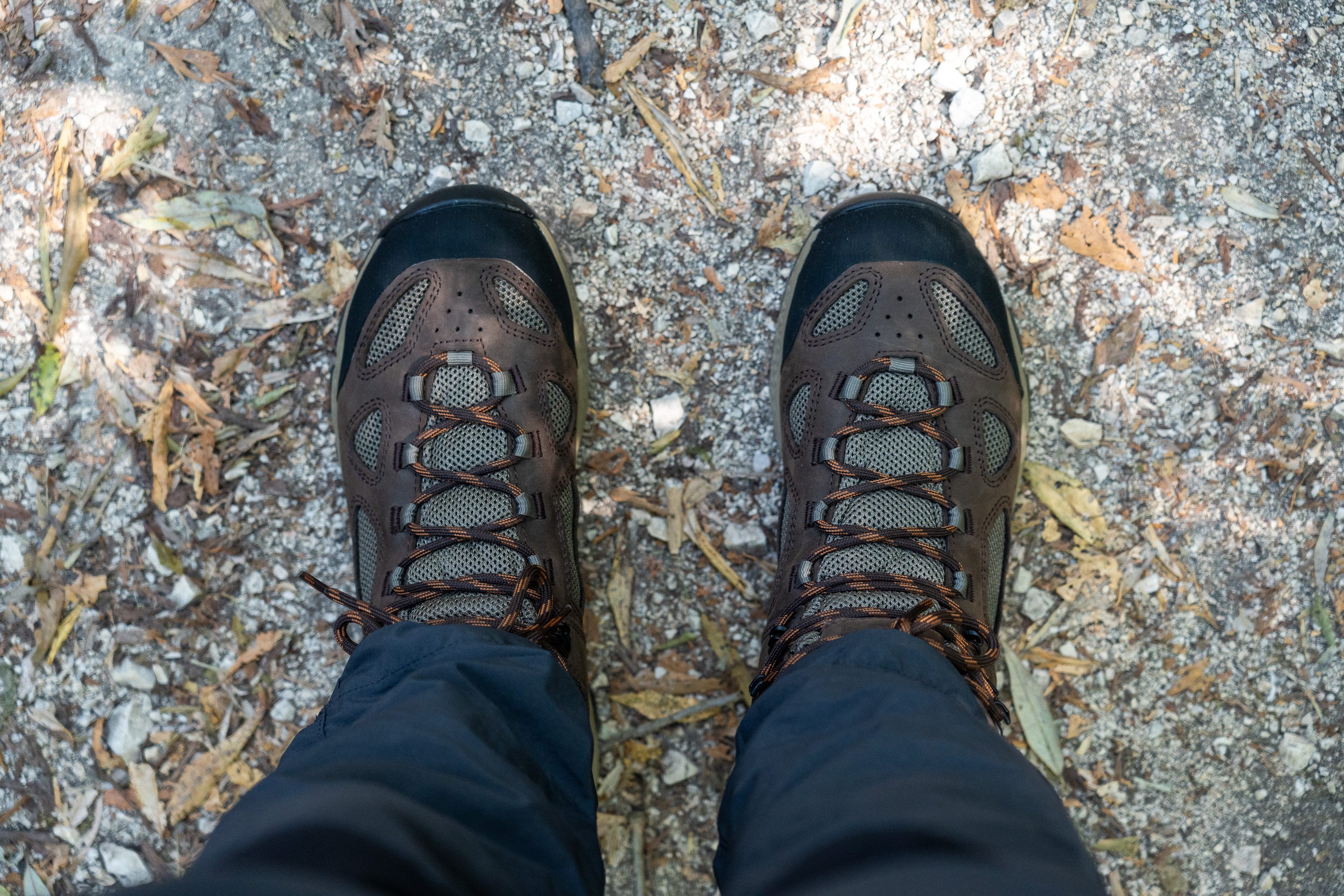
En esta prueba se utiliza una metodología antigua, así que no verás las zapatillas que hemos analizado últimamente en la tabla. Los resultados obtenidos con metodologías distintas no se pueden comparar.
| Breeze | 102.3 mm |
| Media | 102.1 mm |
Toebox width - big toe
The boot has a nice and rounded toebox shape that didn't squeeze our toes at all. In the widest part, it showed 81.4 mm on our caliper which is even a bit wider than many other hiking boots.
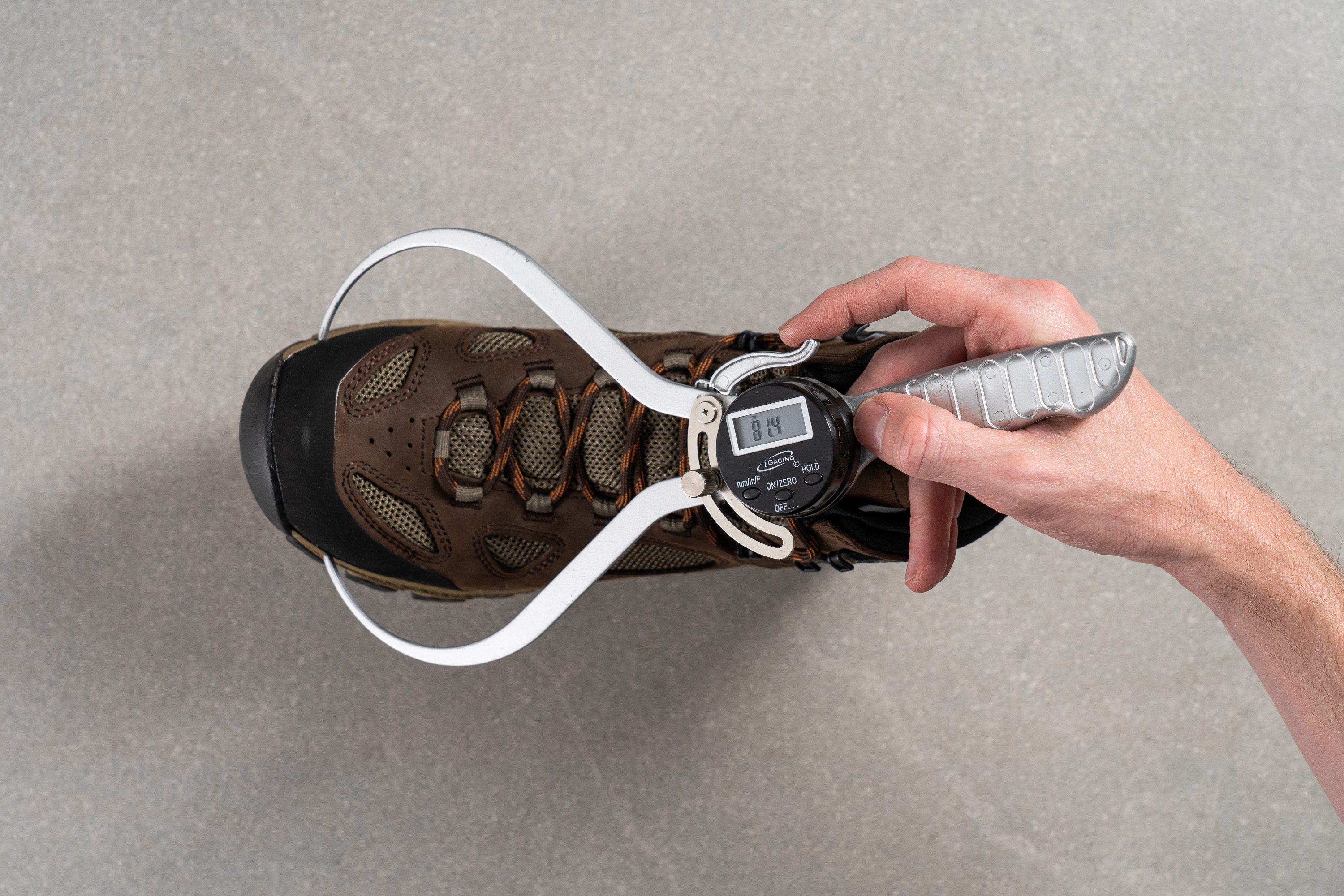
En esta prueba se utiliza una metodología antigua, así que no verás las zapatillas que hemos analizado últimamente en la tabla. Los resultados obtenidos con metodologías distintas no se pueden comparar.
| Breeze | 81.4 mm |
| Media | 78.6 mm |
Cordones
Lo que no nos gusta tanto son los cordones. Son gruesos y redondos, así que no podemos atarnos muy fuerte las zapatillas para que el ajuste sea ceñido, además de que son un poco resbaladizos.
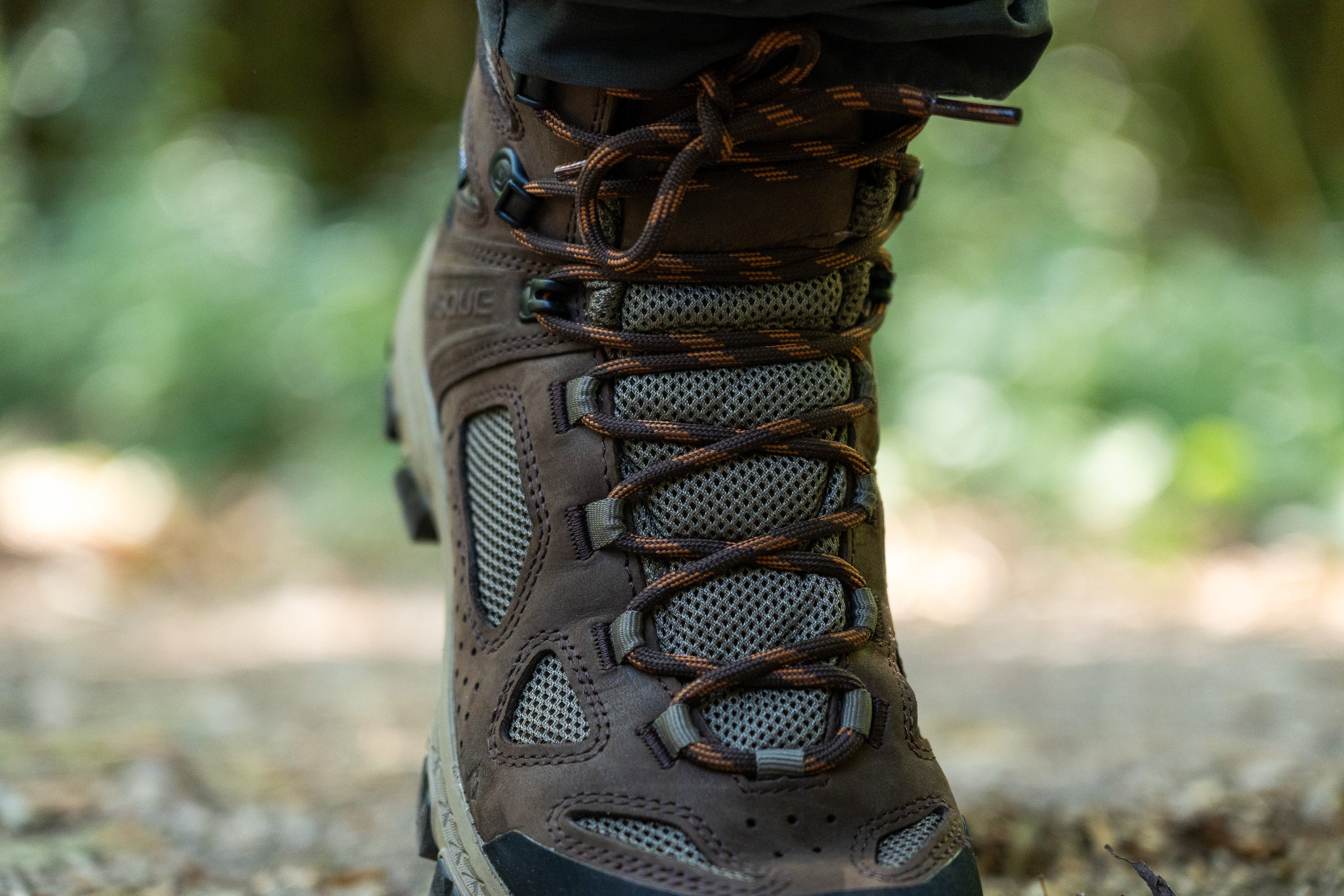
Un nudo doble podría resolver este problema, pero como los cordones son demasiado cortos, no pudimos hacérnoslo.

Como solución, puedes no utilizar los ganchos de la parte de arriba, pero no nos parece una buena decisión para el ajuste general.
Tracción / Agarre
Profundidad del dibujo de la suela
La suela exterior Vasque Trail Strider, propiedad de la marca, nos recuerda mucho al dibujo de la suela de las botas clásicas. Los tacos en forma de trébol apuntan en diferentes direcciones, proporcionando un agarre bastante eficaz en la mayoría de los terrenos, quitando los que son más extremos (es decir, el barro profundo, los caminos llenos de rocas o el hielo).
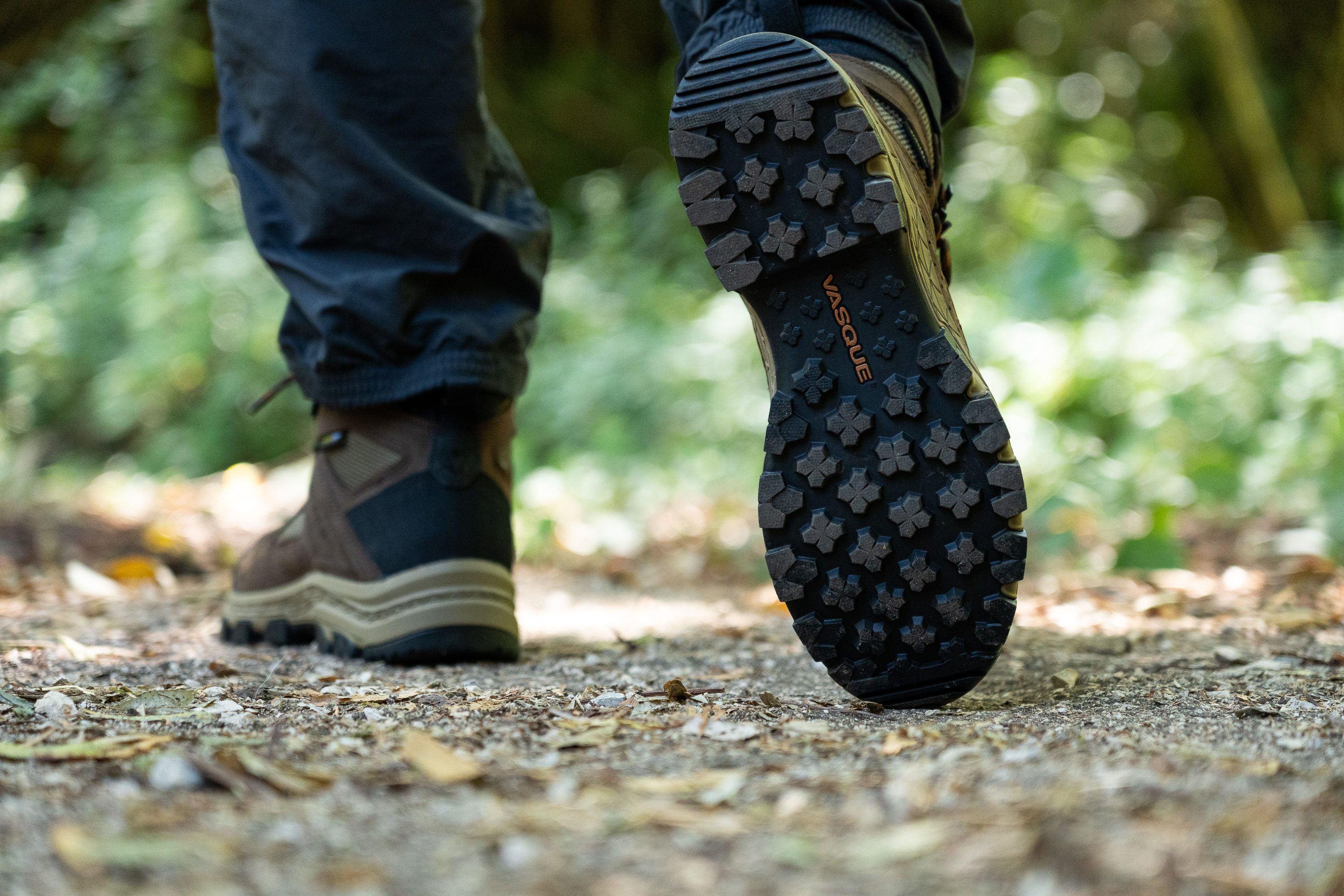
Que estos tacos (4,6 mm) sean más profundos que la media también nos inspira confianza en los terrenos mixtos que tienen un poco de todo: rocas sueltas, raíces, charcos, arroyos y musgo.
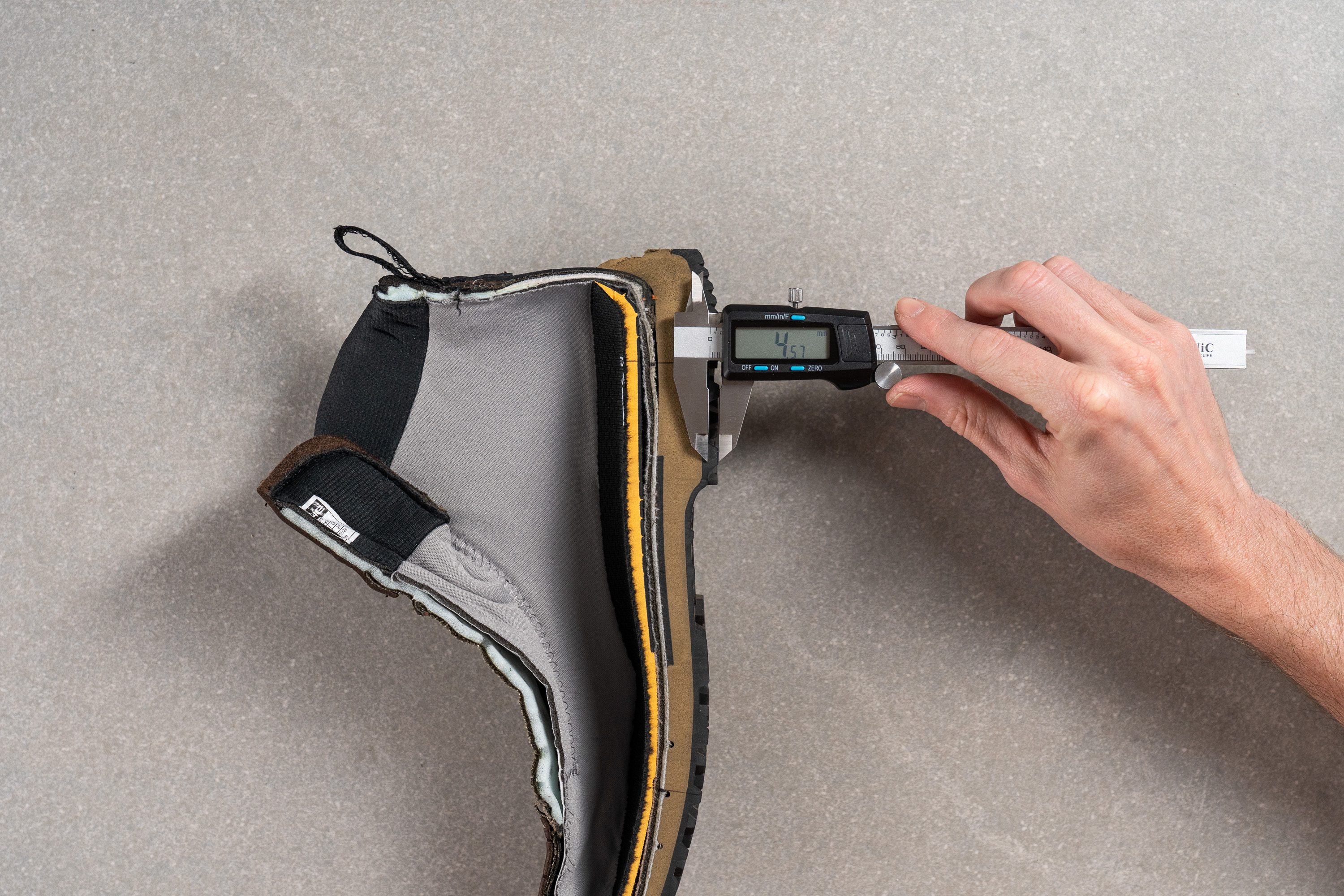
| Breeze | 4.6 mm |
| Media | 4.3 mm |
Flexibilidad / Rigidez
Aunque son unas botas de trekking bastante clásicas, las Vasque Breeze no son tan rígidas como nos esperábamos.
Solo necesitamos 18,3 N de fuerza para doblarlas hasta un ángulo de 30 grados según nuestra máquina de flexión. Es bastante menos del o que necesitan de media las botas de senderismo, ¡por no hablar de las botas de trekking más rígidas!
Esta flexibilidad hace que la pisada sea más cómoda, pero también reduce el público objetivo de estas botas. La mayoría de los excursionistas prefieren los diseños más rígidos para llevar mochilas pesadas durante todo el día.

| Breeze | 18.3N |
| Media | 31.5N |
Rigidez en frío (%)
También nos sorprendió positivamente que las Breeze no se volviesen demasiado rígidas a bajas temperaturas.

Después de pasarse 20 minutos en nuestro congelador, solo se volvieron un 17,4 % más rígidas, así que siguen necesitando menos fuerza que la media para doblarse.

| Breeze | 17% |
| Media | 24% |
Peso
Diseñadas originalmente hace más de un cuarto de siglo, las Vasque Breeze conservan el diseño de unas botas de trekking tradicionales, que es algo que se les ve también en su peso.
Con sus 563 g en una talla 9 eatadounidense de hombre, pesan casi 30 g más que la media de las botas de senderismo.

Pero bueno, vamos a ser justos y a comparar las Breeze con otras botas de trekking de su clase. El peso medio de este grupo es de 600 g, así que entonces estas Vasque estarían entre los modelos más ligeros.
Pero si quieres echarle un ojo a algunas opciones más ligeras que las Vasque, busca botas con la abreviatura LT en su nombre (que indica que son ligeras).
| Breeze | 19.9 oz (563g) |
| Media | 18.7 oz (531g) |
Transpirabilidad
Aunque la marca dice que estas botas de senderismo son transpirables, sigue siendo un modelo impermeable, así que esa transpirabilidad es limitado.
Nuestra prueba de humo demuestra claramente que las zonas de malla y las perforaciones de la parte delantera no dejan ni que salga ni que entre mucho aire.
En cuanto a nuestra experiencia con ellas, la verdad es que no sentimos que las Breeze nos diesen tanto calor en los pies como otras botas impermeables que nos hemos probado. Pero tampoco tenían la ventilación suficiente como para llevarse un punto extra en transpirabilidad, así que se quedan con la nota más baja: un 1/5.
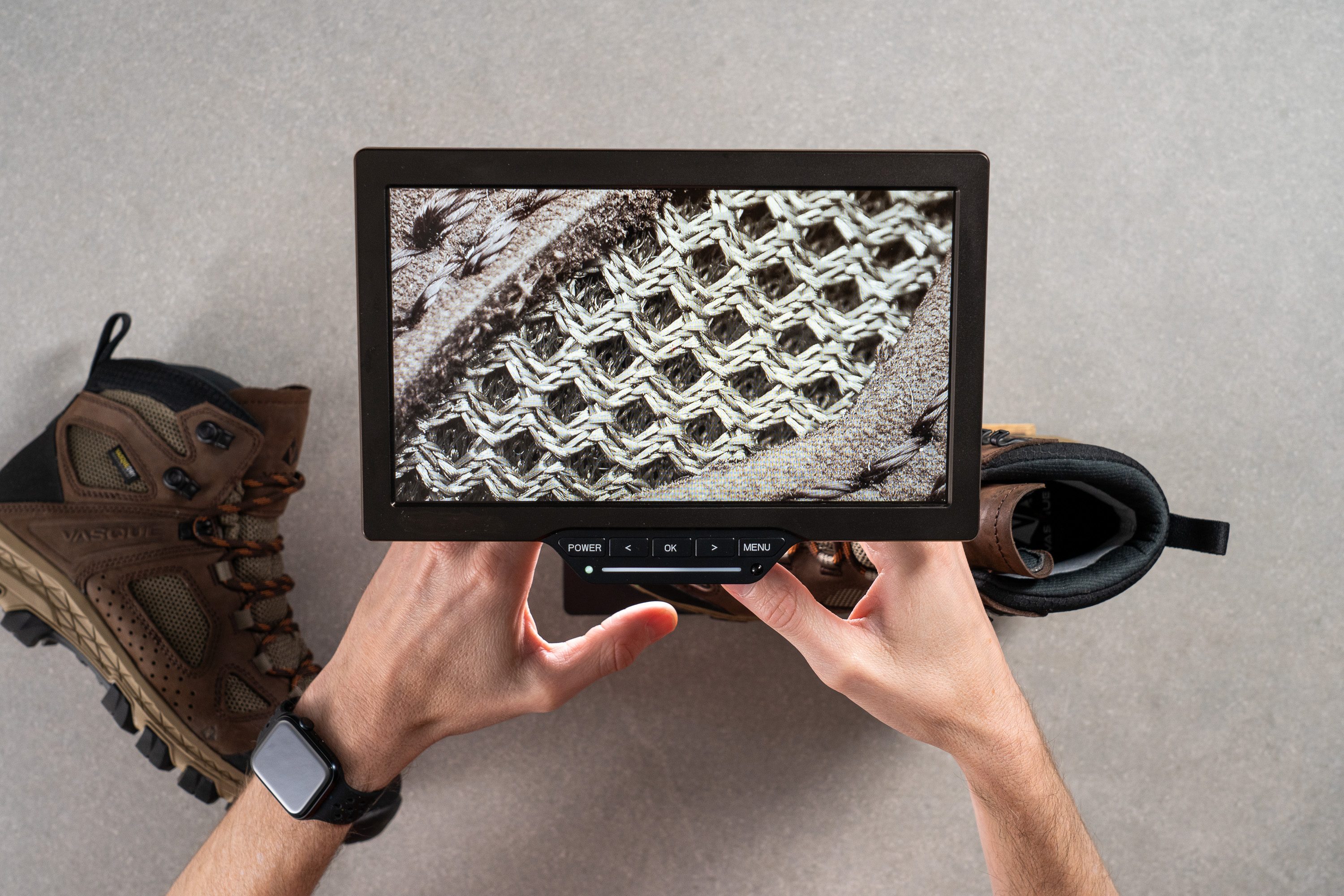
Aunque se puede ver que estas botas tienen un montón de malla en su parte superior, al tener una membrana impermeable debajo, tampoco es que haga mucho.
Y hablando de eso...
| Breeze | 1 |
| Media | 1.3 |
Resistencia al agua
Cuando se rediseñaron estas botas en 2022, se llevaron la nueva tecnología VasqueDry patentada en lugar de la membrana Gore-Tex, que es tan conocida. Aunque esto hizo que los fans de toda la vida de las Breeze se preocupasen, a nosotros no nos parece alarmante, la verdad.
La tecnología demostró su eficacia en las pruebas al aire libre, haciendo que nuestros pies estén cómodos y secos. Es más, ¡que estén hechas en un 25 % de materiales reciclados y no pierdan su impermeabilidad también es todo un logro!
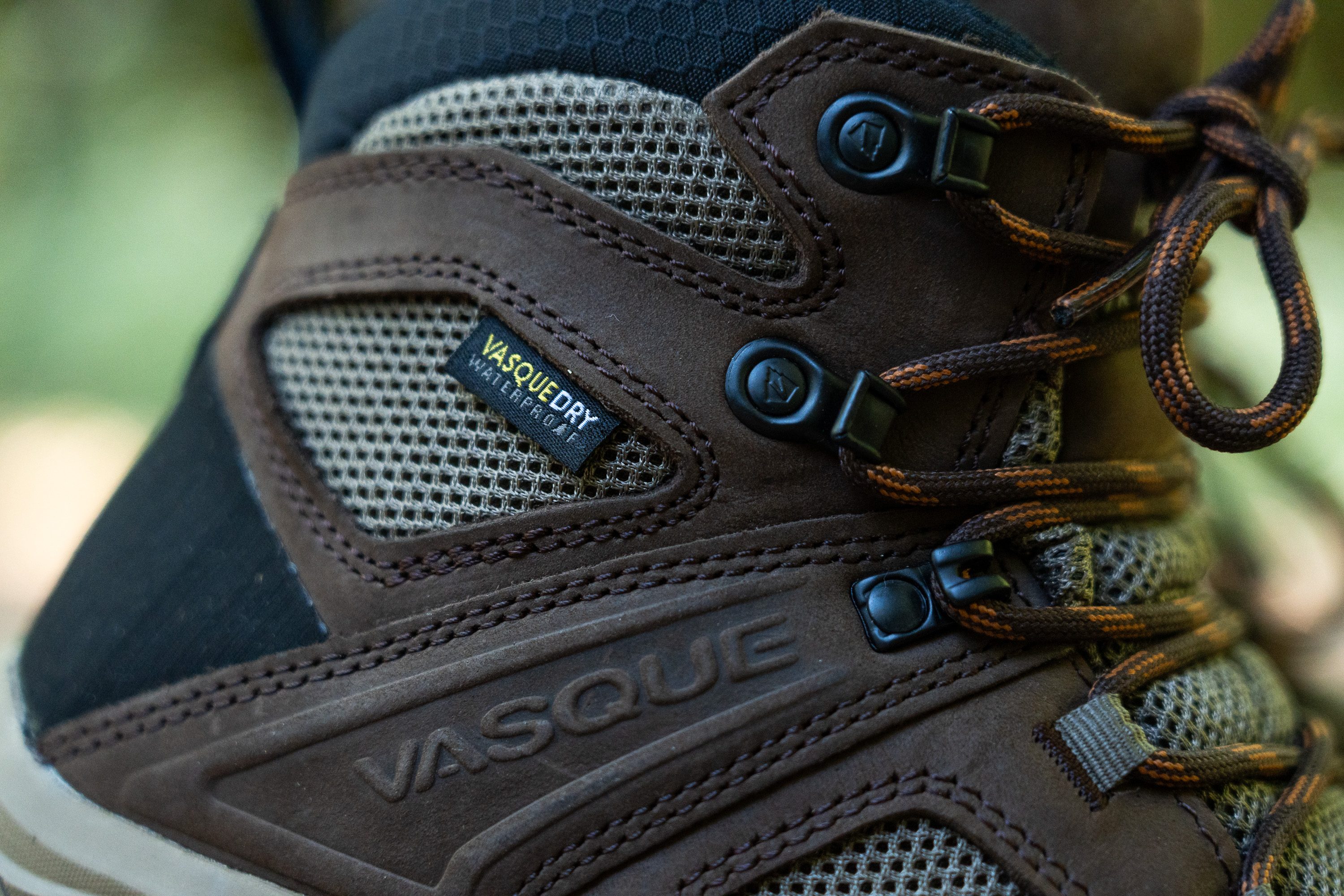
Estabilidad
Prueba de estabilidad lateral
Si la estabilidad es una de tus prioridades en las botas de senderismo/trekking, las Vasque Breeze son una opción sólida.
Nuestras pruebas de uso revelaron que su estabilidad y contención del pie son de primera, eliminando la inestabilidad incluso cuando llevábamos una mochila pesada.
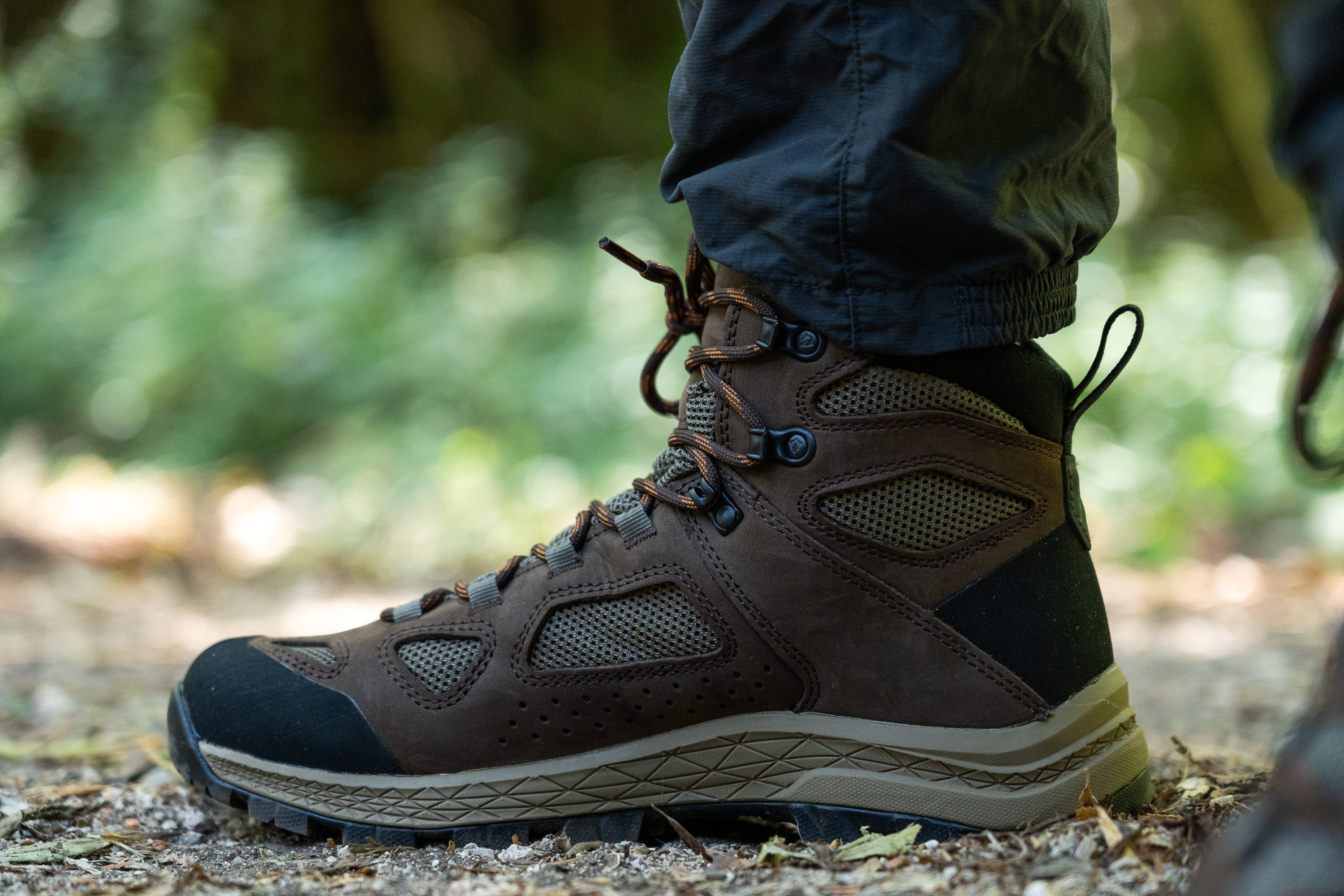
Rigidez torsional
Nos fue imposible retorcer estas botas con nuestras manos, así que les dimos un 5/5 en nuestra prueba de rigidez torsional.
Y cuando las botas no se doblan, tampoco dejan que lo hagan los pies.
| Breeze | 5 |
| Media | 4.4 |
Rigidez del contrafuerte del talón
Su contrafuerte del talón ofrece sujeción, y nos parece un componente crucial de todas las botas de trekking. Además las Breeze lo clavan, ya que su retropié es muy robusto y estructurado.
Como puedes ver, apenas pudimos mover la parte de atrás de estas botas con las manos, así que les dimos un 5/5 en rigidez del acolchado del talón.
Estas botas nos sujetaron bien los tobillos, reduciendo así el riesgo de inestabilidad al llevar una mochila.
| Breeze | 5 |
| Media | 3.6 |
Anchura de la mediasuela - antepié
También descubrimos que la zona de aterrizaje de estas Vasque es lo suficientemente amplia como para las rutas largas de trekking por terrenos distintos.
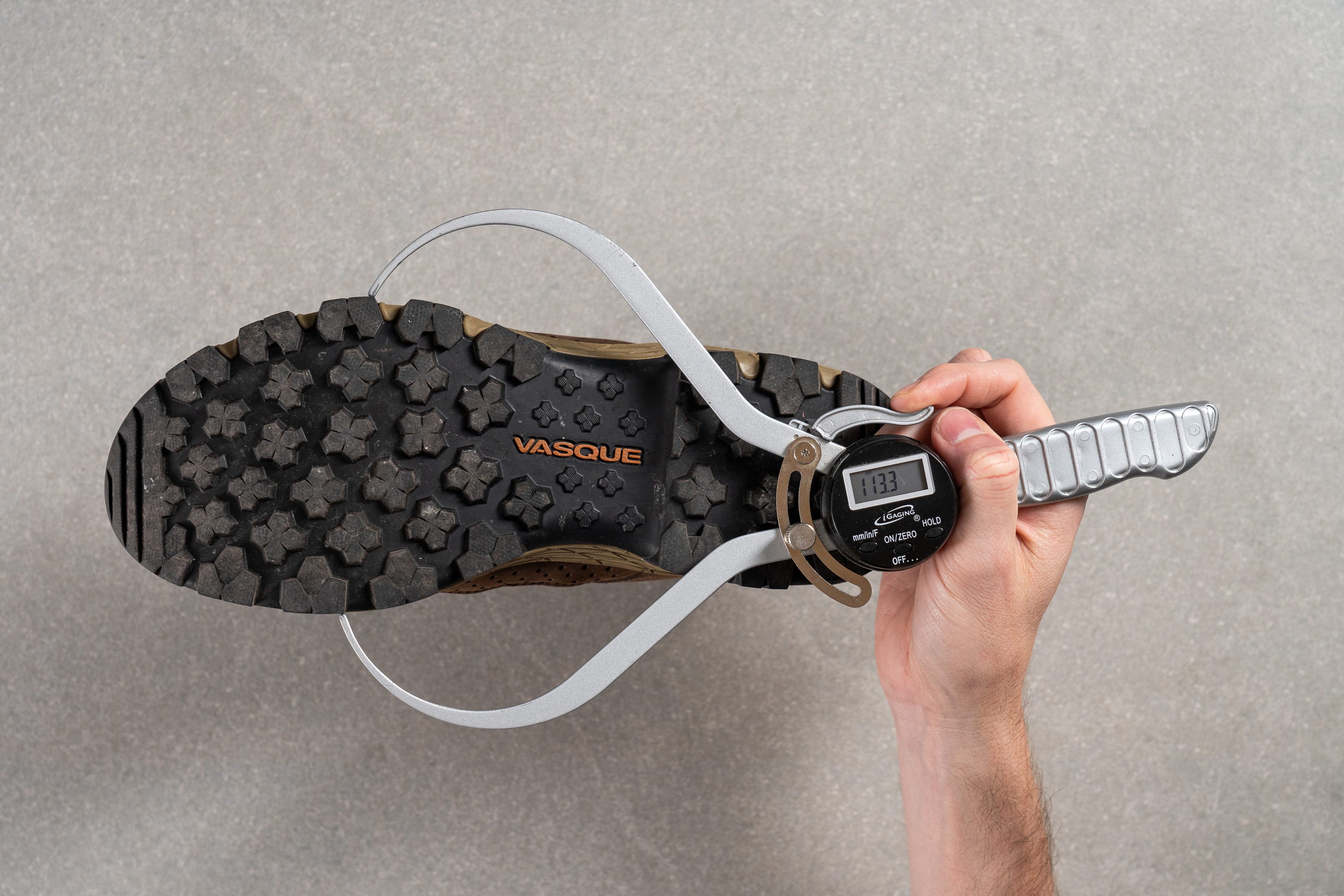
La zona más ancha de la mediasuela de las Breeze mide 113,3 mm, así que está a la par de la media de las botas de senderismo.
| Breeze | 113.3 mm |
| Media | 111.5 mm |
Anchura de la mediasuela - talón
El talón de estas botas también nos pareció lo suficientemente ancho, con 85,9 mm.

Aunque las dimensiones de la mediasuela de las Vasque Breeze no baten récords de anchura, nos parecieron adecuadas para el uso previsto de estas botas, que son lo suficientemente estables para las colinas pero sin pasarse de voluminosas.
| Breeze | 85.9 mm |
| Media | 87.6 mm |
Durabilidad
Durabilidad de la parte delantera
Al chocarse contra rocas, raíces, o pasando por arbustos con ramas que arañan, es muy importante contar con suficiente protección en la zona de los dedos.
Además de la protección de siempre en la puntera, las Breeze tienen una gruesa capa de nobuk con otra capa de caucho encima. Para comprobar su resistencia a la abrasión, cogimos nuestro Dremel y empezamos a darle caña.
Es una pena que la herramienta terminase con esa pieza de caucho en 12 segundos. Es una mala señal para la vida útil de las zapatillas, así que tuvimos que bajarles la puntuación en durabilidad de la parte delantera hasta un 3/5.
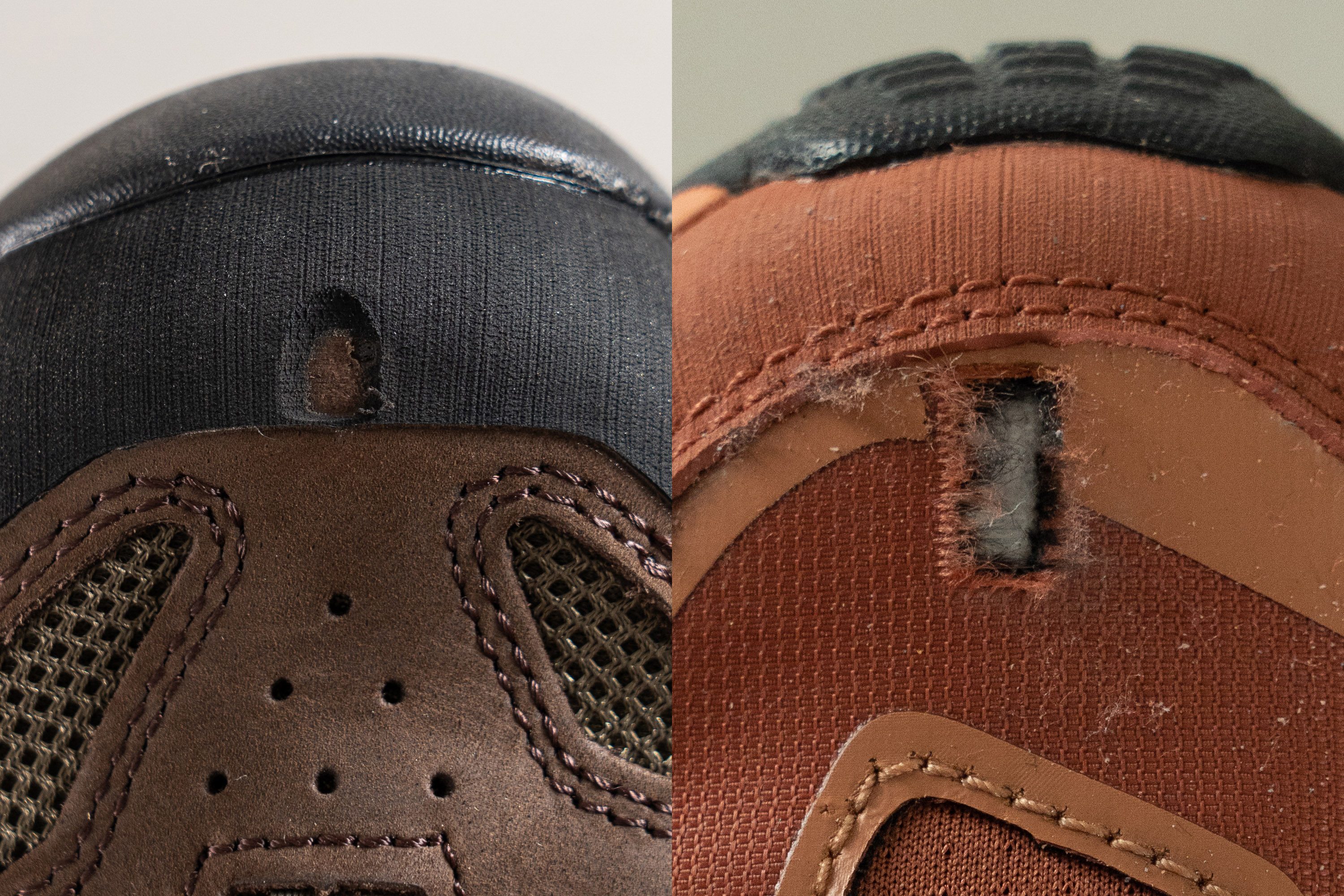
Lo bueno es que están un poco mejor reforzadas que otras zapatillas de senderismo que hemos analizado, ¡tú mira qué agujero!
| Breeze | 3 |
| Media | 4.3 |
Durabilidad del acolchado del talón
Aunque a veces nos olvidamos de esto, la durabilidad de los materiales interiores de unas botas de senderismo es tan importante como la de los materiales exteriores. Entre nuestros probadores, hay algunos que rompen el forro interno de sus botas bastante rápido por la sobrepronación, y al final eso hace que la impermeabilidad empeore mucho.
Por eso cogemos nuestro Dremel y le damos caña al interior del talón.

Para nuestra decepción, el forro de las Breeze se rompió casi por completo después de solo 4 segundos... Otra bandera roja para la longevidad de la parte superior de estas botas, ya que se han llevado solo un 2/5 en esta prueba.
| Breeze | 2 |
| Media | 3.6 |
Dureza de la suela
Lo bueno es que Vasque no ha escatimado en la durabilidad de la suela exterior de este modelo, ya que su dureza y resistencia a la abrasión nos parecieron bastante sólidas para su precio.

Un alto resultado de 87,1 HC nos indica que el caucho es bastante duro, por lo que probablemente sea bastante resistente.
| Breeze | 87.1 HC |
| Media | 87.1 HC |
Durabilidad de la suela
Nuestra prueba Dremel lo confirmó después de darle caña al caucho durante 22 segundos a una alta velocidad de 10K RPM.
Con unos daños de solo 0,7 mm, el caucho patentado de estas botas aguantó como un campeón.
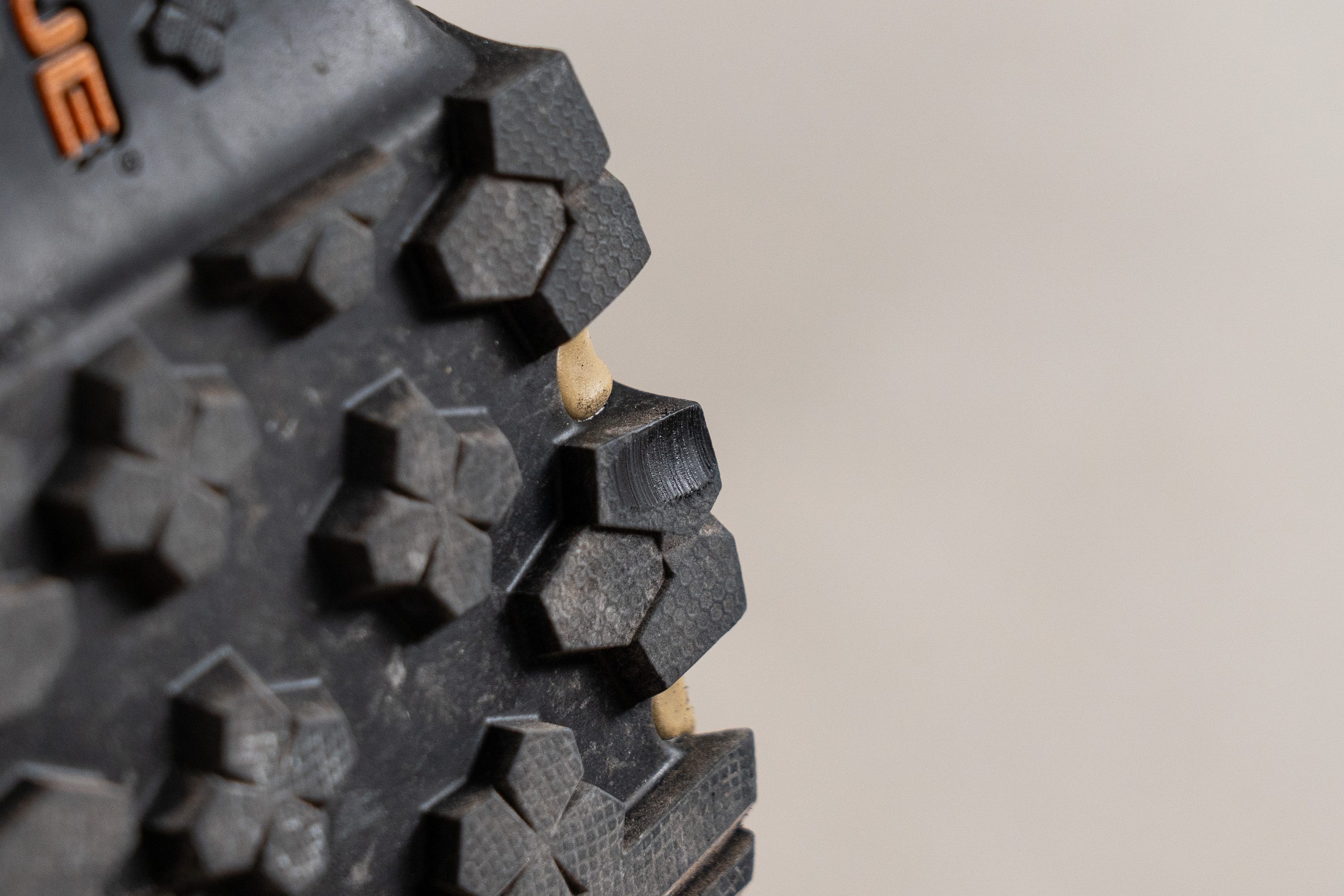
| Breeze | 0.7 mm |
| Media | 0.8 mm |
Grosor de la suela
Con una capa de caucho de 2,5 mm sobre unos tacos de 4,6 mm, no tenemos dudas de que la suela exterior de las Vasque Breeze va a ser una fiel compañera.

| Breeze | 2.5 mm |
| Media | 2.9 mm |
Varios
Grosor de la plantilla
Una plantilla de EVA de doble densidad bastante gruesa (6,9 mm) es la responsable del confort bajo los pies en el caso de las Vasque Breeze.
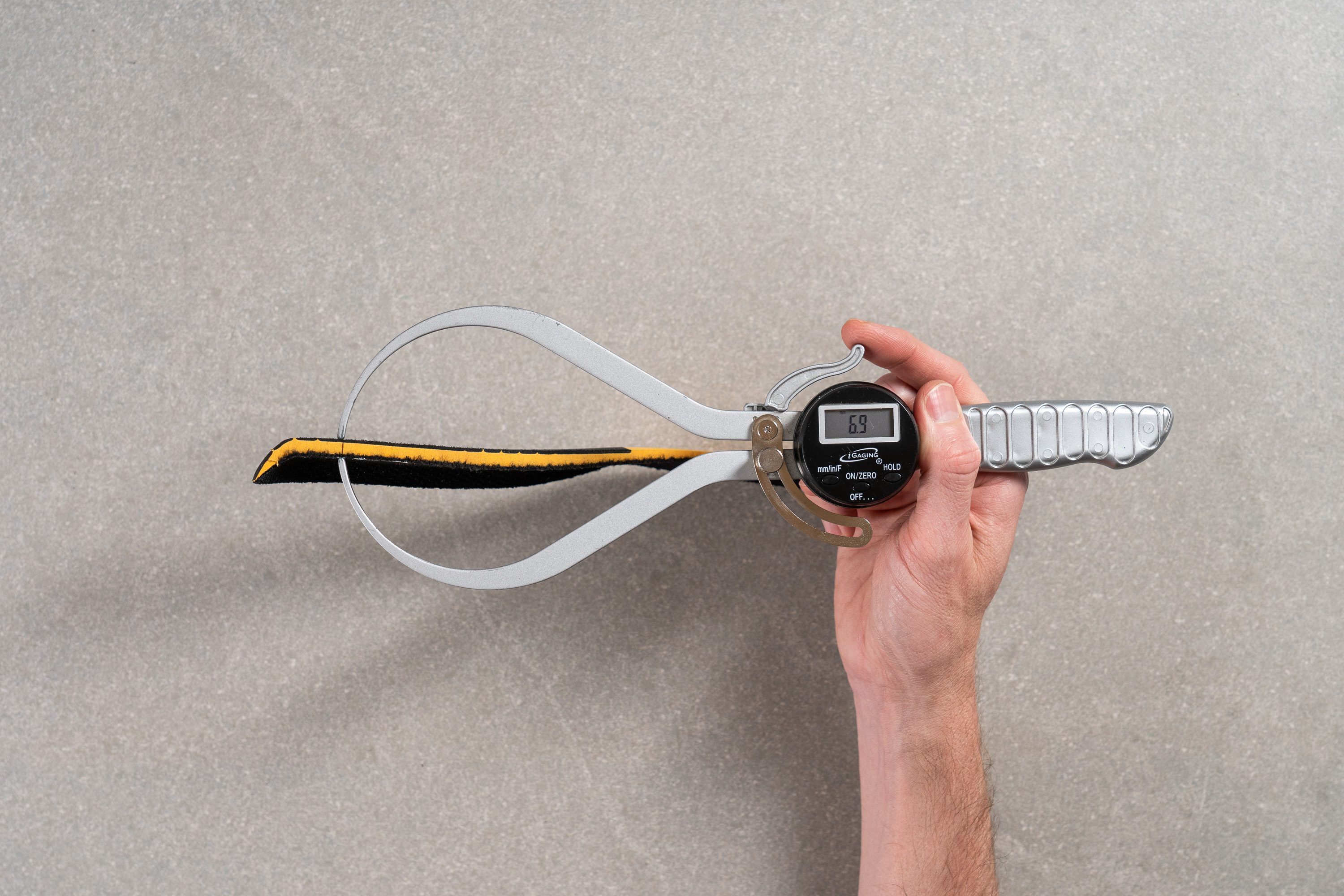
| Breeze | 6.9 mm |
| Media | 6.0 mm |
Plantilla extraíble
Si sueles utilizar tus propias plantillas o si quieres que estas botas te sean más cómodas, no tendrás problema, ya que la de las Breeze es extraíble.

| Breeze | Sí |
Rigidez de la mediasuela en frío (%)
Eso sí, ten en cuenta que las Breeze se endurecerán a temperaturas más bajas.

Después de dejarlas 20 minutos en nuestro congelador, nuestro durómetro marcó 39,4 HA, así que son un 19,8 % más firmes que a temperatura ambiente.
| Breeze | 20% |
| Media | 20% |
Elementos reflectantes
Estas Vasque tienen un diseño bastante tradicional, así que no cuentan con elementos reflectantes.

| Breeze | No |
Acolchado de la lengüeta
Ni siquiera esta lengüeta más fina de lo normal (7,8 mm) nos ayudó con lo cortos que son los cordones.

Como puedes ver, el acolchado en el interior de las Breeze es escaso. Esto nos deja con más espacio que rellenar dentro de las botas, lo que no es muy buena noticia para la gente con pies estrechos o tobillos finitos.
| Breeze | 7.8 mm |
| Media | 11.2 mm |
Lengüeta: tipo de refuerzo
La lengüeta de las Vasque Breeze está totalmente unida a la parte superior por ambos lados, lo que hace que sean como una armadura para los pies.
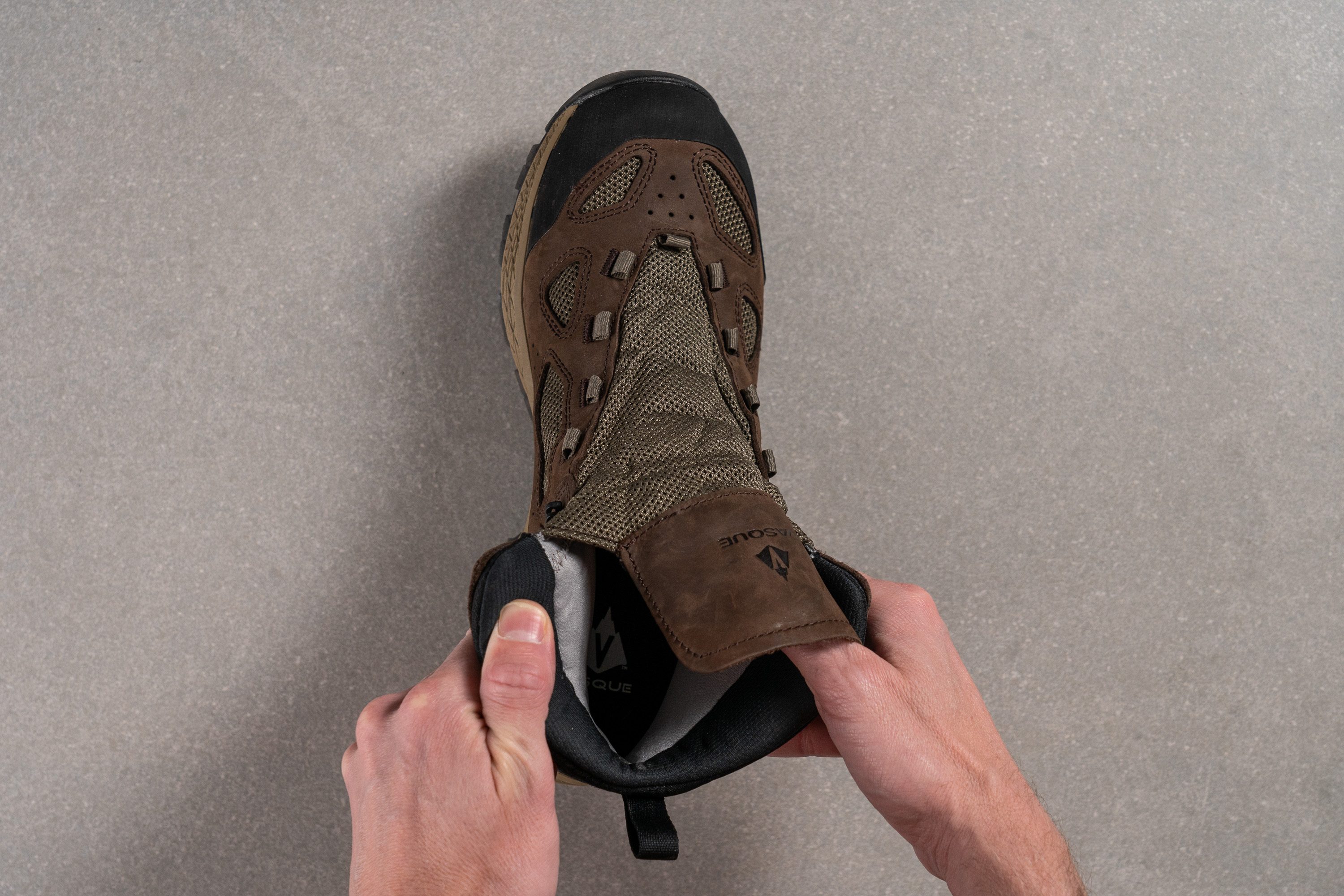
Además, esto hace que el agua tenga que ser más profunda para metérsete dentro de los pies.
| Breeze | Ambos lados (completo) |
Precio
Las Vasque Breeze tienen un precio muy moderado en comparación con otras botas de senderismo del mercado. Descubrimos que su relación calidad-precio es muy justa y razonable, sobre todo teniendo en cuenta su estabilidad para el trekking.
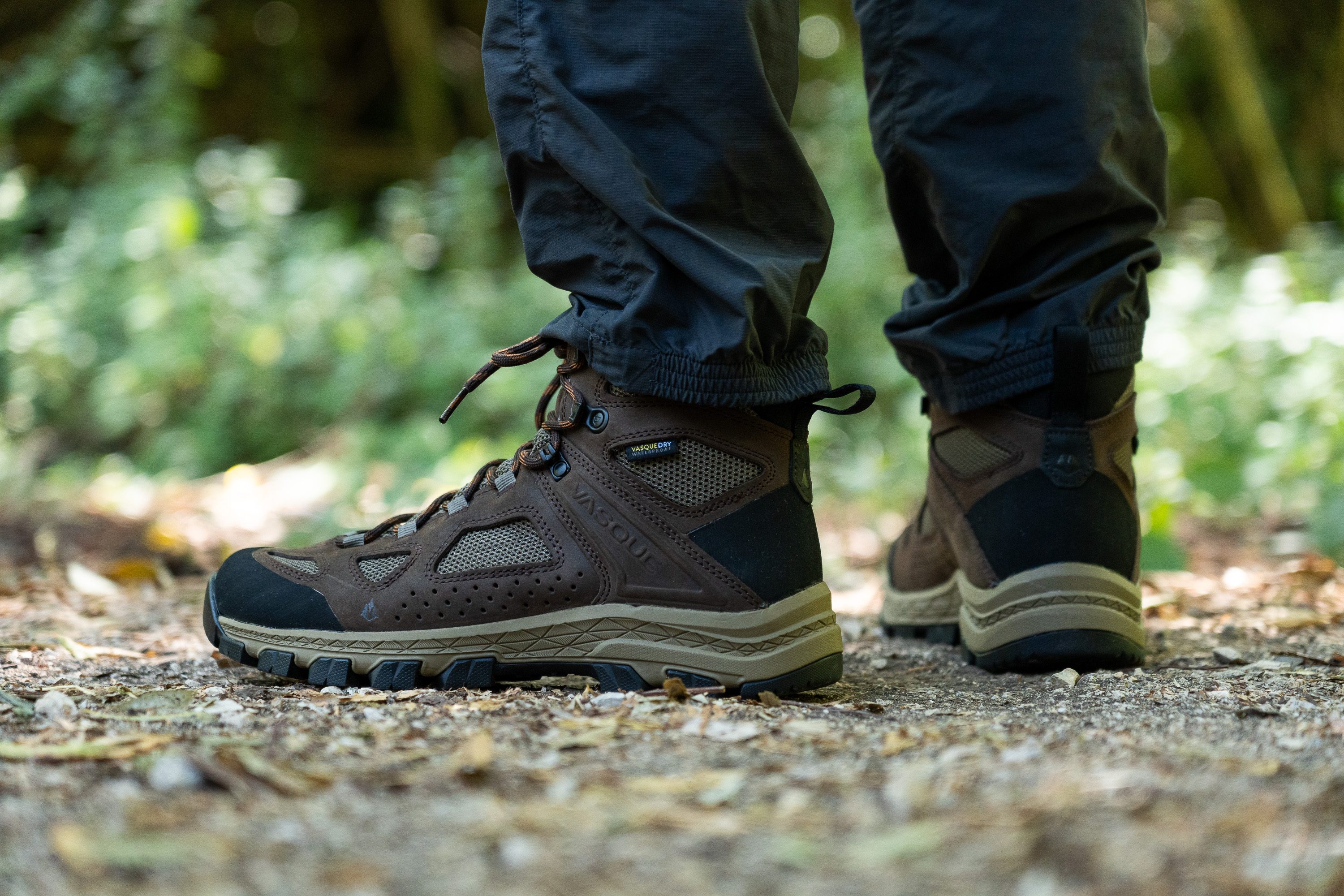
Además, también son, con diferencia, las botas de trekking más baratas de nuestra lista.
| Breeze | $160 |
Tirador del talón
Un tirador grande y bien sujeto en la parte de atrás de las botas nos ayudó a calzarnos y descalzarnos.

| Breeze | Tirador circular |
<p>Materiales sostenibles</p>
Cuando las Breeze se reintrodujeron en el 2022, que incluyesen materiales sostenibles fue uno de sus mayores cambios. Este es el porcentaje de materiales reciclados en las distintas partes:
- Malla parte superior (75 %)
- Contorno del talón (60 %)
- Impermeabilidad VasqueDry (25 %)
- Plantilla de EVA (20 %)
